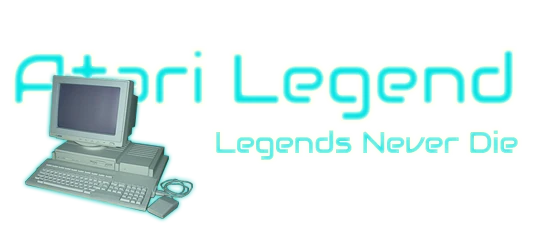

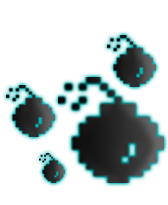





Every ST enthusiast must have heard of François Lionet, haven't they? He is the creator of STOS, The Game Creator, and the individual who single-handedly taught thousands of people how to program and create games. Without his contributions, we might never have known about figures like Tony Greenwood or Deano Sharples, and the ST Format cover discs would have appeared far less vibrant. Let's discover the stories that the godfather of STOS has to share.
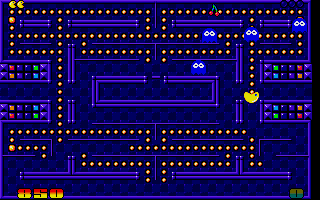
One of the first games François ever created was a pac-man clone. The one depicted here is such a clone, one of the best available on the ST called Crapman ;-)
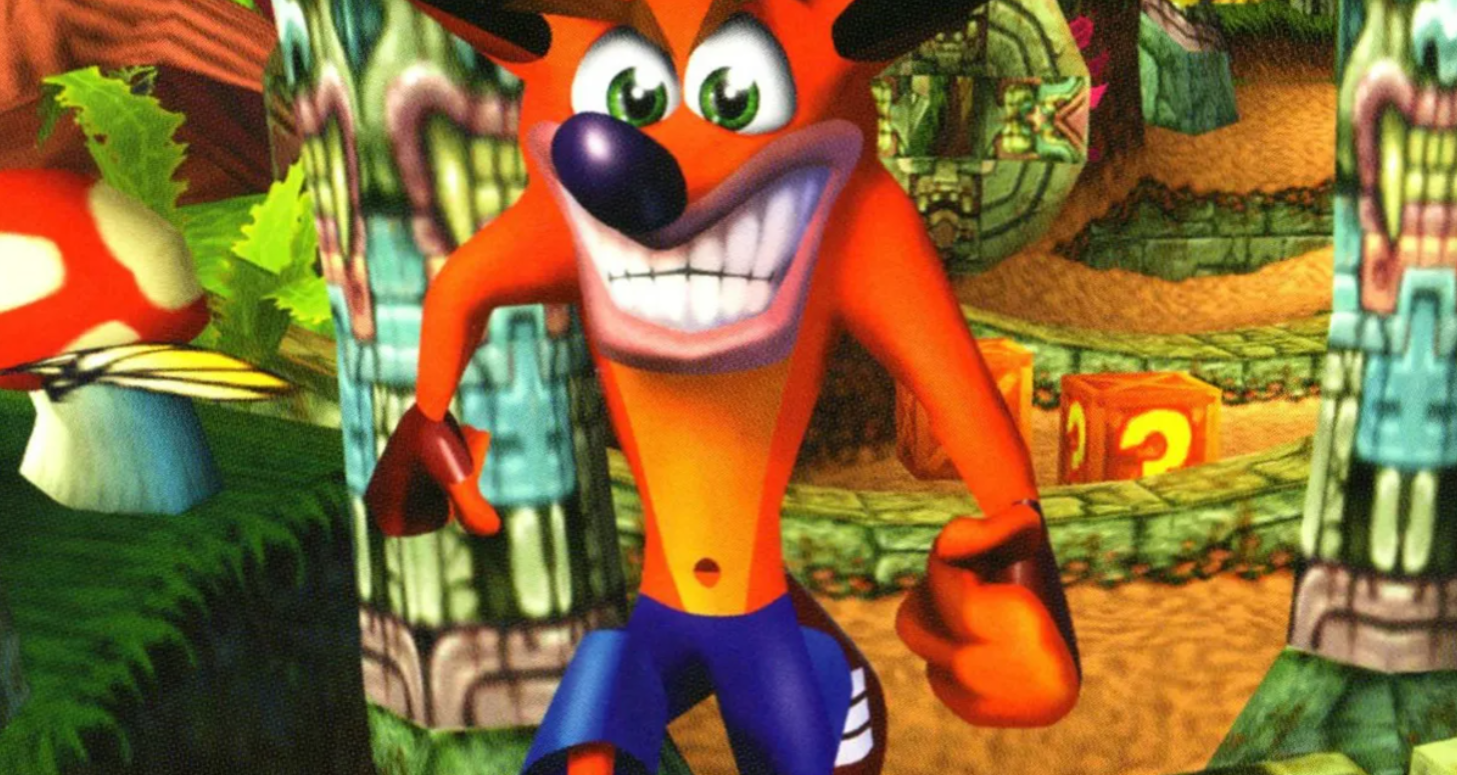
François never really was a gamer, but he did complete the original Crash Bandicoot on the PS1, together with his son.

François was responsible for converting the French cult game Captain Blood to the CPC and IBM PC, which was quite a challenge.
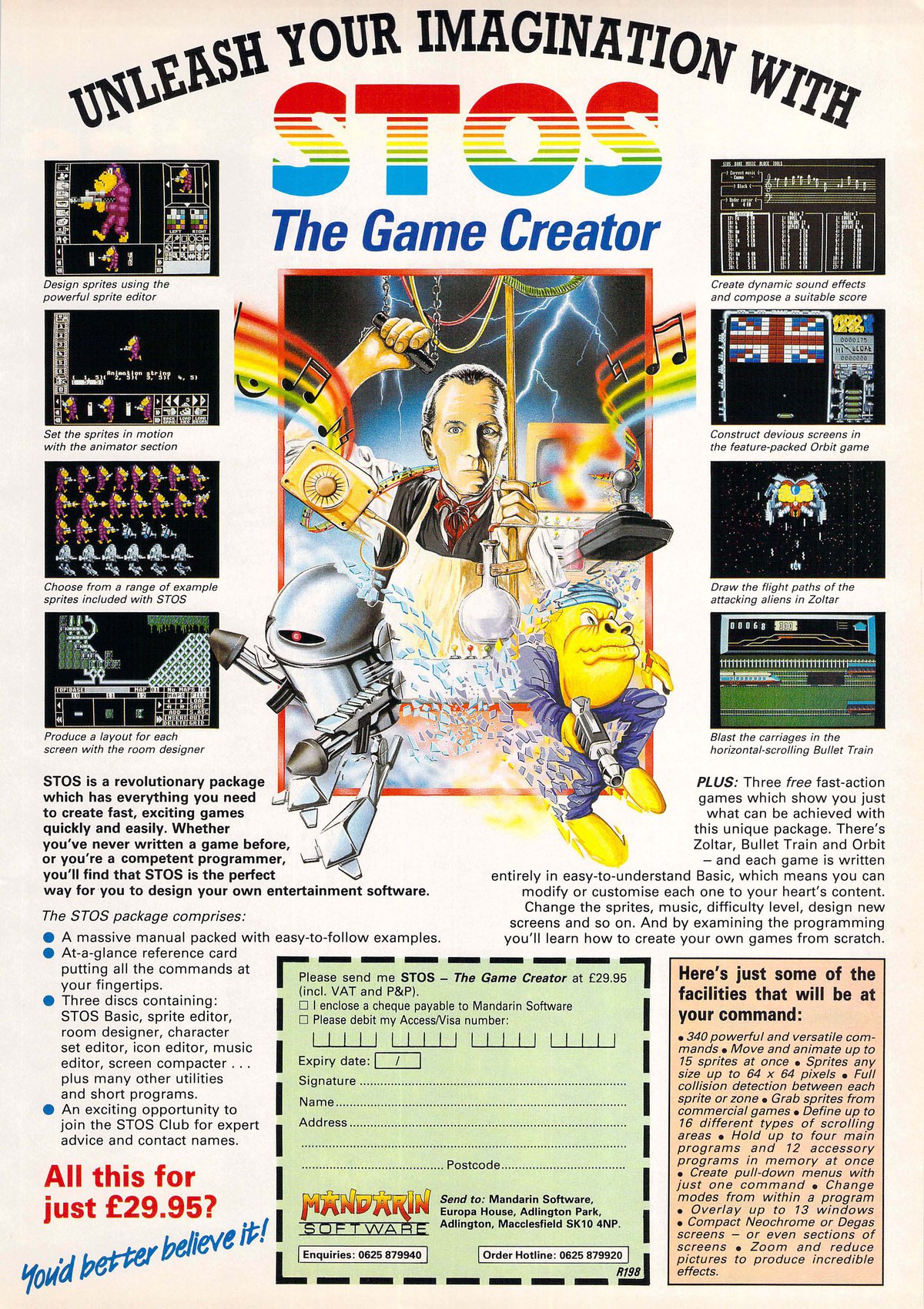
Did you know that STOS for the Atari ST was created because Françcois hated the GEM OS of the system? What an incredible story.
1) When did you first get involved with computing or involved with the programming and what was your first computer?
Hello, I'm François, spelled without an 's' and with a cedilla on the 'c' (though I don't have the accent mark on my QWERTY keyboard right now). As I mention on my Facebook profile, I'm simply a programmer, with over 40 years of experience, trying to make a living. I was married for 24 years and have a child who is now 32 years old. Currently, I reside in Les Sables d'Olonne, a wonderful place near the Atlantic ocean.
2) When did you first get involved with computing or involved with the programming and what was your first computer?
I began my programming journey with a calculator, the initial programmable device I encountered was a Texas Instruments TI57. Despite its rudimentary nature, offering just 49 program steps and limited functions, it served as a gateway for me to grasp the essence of programming. Then, in 1981, I acquired my first true computer: an Ohio Scientific Superboard II. This all-in-one motherboard featured a keyboard, a 6502 processor, 4k of RAM, a 24x24 video display, and cassette output. It was an impressive machine, on which I immediately started to program games.
I kept that machine for two years and tinkered with it extensively. I connected a homemade joystick crafted from PVC tubes and a speaker (there were only two bytes of output available)... Initially, I delved into creating games in BASIC, but soon realized the necessity of using machine language due to its superior speed. Thus, I developed a simple 6502 assembler in BASIC and transitioned to coding games in 6502 machine language, including classics like Meteor (a traditional meteorite game), Pac-Man, Space Invaders, and Defender. These were complete games featuring titles, scoreboards, sounds, and music. Amazingly, all programmed while in preparatory school, studying Math and English!
3) Even though you did mention a little bit in your last answer, are you into playing any video games yourself and if so what games do you like playing or games that have inspired you to create the stos basic?
I'm not much of a gamer myself... Apart from a handful of games I completed on the PS1 with my son after its release, like Crash Bandicoot, my gaming experience is rather limited. The only other times I indulged in gaming were during my military service, sneaking in some sessions on my Gameboy in the toilets (playing Super Mario and Tetris)...
During the era of STOS, I was deeply immersed in game development across various platforms such as Oric, CBM64, and CPC 464. I found myself constantly rewriting the same routines, sprites, sound effects, music, and animations for each new platform or adaptation project (such as porting Captain Blood from the Atari ST to CBM64 and IBM PC). It became apparent to me that it would be far more efficient to create a unified language that encompassed all these elements, allowing me to write them just once for any given platform.
STOS emerged as a collaborative project with a French game creation group known as JAWX. Originally, the idea stemmed from my dissatisfaction with GEM, especially its low-res interface with oversized icons and limited desktop space. The initial concept of STOS consisted of two components: a DOS system to replace GEM, overseen by Constantin Sotiropoulos, and a BASIC interpreter, which fell under my responsibility. And as I was only thinking about making games, STOS naturally evolved into a comprehensive game creation engine.
4) You had a big involvement with the AMOS BASIC for the Amiga, could you tell us more about this one?
I was heavily involved in it, you could even say I wrote it all myself! Entirely in pure 68000 machine language... Only a few additional features and examples were contributed by Europress Software, the publisher.
In 1989, in England, Atari ST sales were plummeting rapidly due to the emergence of the Amiga and the effective marketing strategies employed by David Pleasance in the UK. Given that both systems shared the same processor, I was able to leverage some existing code. However, I undertook a complete overhaul of the graphical system to fully exploit the remarkable capabilities of the machine at that time.
5) I noticed you released a few different things, maybe projects you were working on with other people. Could you tell us more about those ones.
Well, here's a rundown of the products from my career... STOS and STOS Compiler, which were published by Mandarin Software (formerly Europress Software) in 1987. Then came AMOS, AMOS Compiler, Easy AMOS, and AMOS Professional, all launched in 1989.
Afterward, I transitioned to the PC and collaborated with Yves Lamoureux, whom I met while working on the port of Captain Blood (he handled the CPC version, and we worked very well together). Together, we developed Klik and Play, the first-ever mouse-driven game creation engine for kids on Windows. Europress Software served as the publisher during this period. Subsequently, we created The Games Factory and Multimedia Fusion.
By the late '90s, mid-sized publishers were dwindling in the UK due to fierce competition in the computer market, leading to Europress's closure. In response, Yves and I founded Clickteam, becoming pioneers in selling products exclusively online. The early days were challenging, but we persevered, eventually launching Clickteam Fusion in 2005, complete with exporters for various platforms. Remarkably, the company remains operational to this day. My most recent product, AOZ Studio, was released in January 2023, but unfortunately, it didn't perform well commercially, and we had to put the company asleep.
6) You already mentioned clickteam, but how did it start exactly? How was your relationship with Yves. Can you talk about the history in more detail?
As mentioned earlier, I first crossed paths with Yves during the porting of Captain Blood. He was exactly the kind of collaborator I had been seeking. Not only is he an excellent programmer, but also very calm and he loves to delve deep into system intricacies. This complemented my strengths, as I lean more towards interface design and animation. Towards the end of the AMOS era, as I contemplated transitioning to PC, I approached him about collaborating on a new game creation system for the platform.
The concept for the event editor was already brewing in my mind, inspired by observing accountants working with Excel. Some Excel spreadsheets can be incredibly complex, with seemingly endless loops. Interestingly, when you ask an accountant if they consider themselves programmers, they typically respond with a firm 'No!' This realization led me to believe that complexity could be significantly reduced through the use of a grid-based system.
Simultaneously, Klik and Play marked a milestone as the very first product to utilize event programming, incorporating conditions and actions—a concept that Scratch would adopt a couple of years later.
7) Captain Blood is a legendary French game on the Atari ST, with an almost cult status. Please tell us more about this story...I really like the name of the game and have tried it myself.
It was around 1986/1987, following my final year at vet school. I relocated to Paris with three friends from school to be closer to publishers and pursue a career in programming. Ere Informatique, the publisher of Captain Blood, reached out to me to adapt the game for the Commodore 64 and IBM PC CGA. Yves Lamoureux, who would later become my partner at Clickteam, was responsible for the CPC 464 version and was working at Ere as the in-house programmer.
The process of porting the game proved to be challenging. The Atari ST, being a 16-bit machine with ample space available, posed fewer constraints. However, on platforms like the CBM 64, I had to resort to using both the upper and lower parts of the screen to store code, particularly during segments such as flying over the planet! The IBM PC CGA port presented even more difficulties, not only due to the limited palette of 4 colors in CGA mode (yuk!) but also because of memory segmentation. PCs were transitioning from 8 to 16 bits at the time, and the game needed to be compatible with older machines, requiring me to manage memory segmentation directly within the code... Quite the ordeal!
Naturally, there were extensive discussions with Didier Bouchon, the original game's author (handling both programming and graphics). He was a brilliant and creative individual. His code often reflected his creativity to such an extent that there were certain aspects he couldn't even explain to us! For instance, the flight sequences above the planet differed from those on the Atari ST because he couldn't articulate how he achieved that captivating flying effect...
8) What do you think about modern computer games and have you been playing any yourself?
I'm not much of a gamer myself, so I cannot tell you much on that front. However, I did spend a year working on a AAA game at a company in Warsaw back in 2017—Yakuza 2, to be specific —and it was really interesting. The company, QLOC, specialized in porting video games across different platforms. Our task was to take the game's code from the PS2 version and adapt it for PC. It felt like embarking on a treasure hunt, considering all QLOC received was a massive folder filled with the original code (11 million lines in total), with all comments written in Japanese. There was no assistance available as the original team had been disbanded ... It was a real adventure and I learned a lot!"
9) I find stos basic a very fascinationg program and have been working my way through a beginners guide myself. Would you say this is easier to learn than most other programming tools?
Is it easier to learn with STOS? Not easi-ER, easy. While there are numerous products available for learning programming, such as Scratch or Python, STOS stood out for being a genuine programming language that was simultaneously simple, while effectively teaching good programming practices. During the Atari ST era, STOS was the sole game engine available for kids. When you have only one option, you have no choice but to learn with it! It's a pity I opted for line numbers; that was my biggest mistake. If it had been structured like AMOS, without line numbers, it would have been a much stronger competitor to GFA.
10) Have you ever had any articles published in any of the old magazines? I remember my mum and Dad having a small ad in one of the magazines when they were selling atari st or ste games.
Yes, quite a few! Both in England and France. During the period when STOS and AMOS were simultaneously published, I was contributing around 20 pages per month to various magazines. In a French magazine called "Amiga Dream", I even introduced a series of articles written by my dog, "Daisy," and the "Daisy-Demos" became quite popular at the time!
11) Did you have any difficulties when making STOS BASIC or with any of your other involvements?
Not really... Programming the Atari ST was relatively straightforward, especially the way I approached it! I took a rather unconventional approach and didn't bother with delving into the extensive documentation. For instance, when you booted up STOS, it would claim the entire memory from the end of the system to the beginning of the screen without even asking the system! :D
As for obtaining the mouse position, instead of utilizing GEM functions (which I really hated, as you might have guessed ![]() ), I simply hunted for changing numbers in the lower memory zone whenever I moved the mouse, and lo and behold, I found them! This approach also explains why STOS didn't play well with later versions of the system...
), I simply hunted for changing numbers in the lower memory zone whenever I moved the mouse, and lo and behold, I found them! This approach also explains why STOS didn't play well with later versions of the system...
AMOS, on the other hand, was much gentler with the system, even though it also grabbed the entire display.
12) Do you still keep in contact with your old colleagues that you used to work with in the past? It can be hard due to our busy lives.
Yes of course! And today with all the possible ways of messaging you never loose track of anyone anymore... We keep in touch even if we do not work together...
13) Do your family members get involved with programming or things relating to programming?
No, and that was always challenging for me. Nobody in my family understood what I did; there were no programmers in my family. Even my son, Christophe, who dabbled in a few games on Fusion, never quite grasped programming. Many times, I wished I were married to someone more technically inclined; that would have been really cool...
14) This might be a hard question...If you were to pick your top five games from the atari st, what would they be?
haha! Well, I did play Arkanoid, and Captain Blood of course... but that is all I can say. Not a gamer.
15) Do you like to watch films and what is your favourite film or TV show?
Yes, of course, I watch movies and TV shows. My all-time favorite movie is Brazil by Terry Gilliam, and on the TV side, I enjoy The IT Crowd, Father Ted, Black Mirror, Silicon Valley... essentially, all sorts of shows for geeks... ![]()
16) I just have to ask, I love board games and was wanting to know if you like your board games yourself? What is your favourite and why?
To play board games you have to live with people, and I live alone. When I was married we did play the classical ones, Cluedo, Memory etc. all the games you can play with a kid. I never liked Monopoly very much though, I always found it too long and boring...
17) I noticed ST Graveyard usually asks this at the end of the previous interviews so here I go. If you could have a drink with anyone, dead or alive, who would it be and what would you ask?
That's an interesting question. If I could have a drink with a dead person from history, I'd choose Jesus! Sure he was a normal man, far from all the circus invented by the church, this would clear a lot of misconceptions about religion in my mind! ![]()
Thanks for doing the interview, I really enjoyed our chat about old times. You have helped lots of people and made a massive contribution to the Atari ST community and many others.
August 5, 2025 by grams88
Martin Brownlow is a living legend. Best known among ST fans for creating the beloved PD/shareware classics Grav and Grav 2, his games are still cherished by many to this day. From a young age, Martin knew he wanted to make games for a living...and he made that dream a reality. In fact, he’s still doing it today. Discover the full story and much more in this exciting new interview.
October 4, 2024 by grams88
Stacey Jamieson began his career at DMA Design, working on titles such as Oh No! More Lemmings, Walker, GTA and others. Over the years, he moved on to Electronic Arts (EA), where he contributed to major games like the Star Wars Battlefront series, Mass Effect, and Need for Speed. Today, he is the co-founder of Expression Games, where he continues to pursue his passion for game development. What an exciting career!
July 29, 2024 by grams88
Who doesn't love a good underdog story? Chris Sharp is a noteworthy apprentice of the renowned François Lionet, as he mastered the art of coding with the almighty STOS Basic. Chris crafted a few games for our cherished ST, including fan favourites like Magic Tomb and the Freaked Out series. Intrigued? Dive into our interview to revisit the era when game development could still be a solo endeavour.
July 16, 2024 by grams88
When Sega released its Master System, it came bundled with the game Alex Kid. To this day the game remains very popular, loved by many. One of those people is Terry Lloyd. More so, Alex Kid was the main inspiration for the Atari ST platform classic Axel's Magic Hammer. But that is just one of his many accomplishments. Terry has been around the block. Working as an artist and game designer at the beginning of the 80's for Gremlin Graphics, he then moved on to Core Design, which he helped get off the ground. During the 90's he contributed to founding the company Malibu Interactive. On the Atari ST, Terry's resumé include Dynamite Dux, Car-Vup, Rick Dangerous 1 & 2, Torvak the Warrior, WarZone and many more. Read all about this veteran of the games industry in this exciting interview.
April 18, 2024 by grams88
It doesn't always have to be about computers, coding and graphics. Adrian Powell, the artist behind the original Lemmings game, crafted all its artwork, including box art and promotional materials. His passion for painting lemmings has persisted over time and he is still painting lemmings to this day. Powell's work remains influential and has helped selling millions of copies of this classic (ST) game.
Currently 0 registered users online
In the past 24h there were 6 registered users online